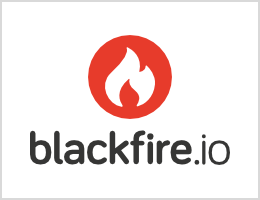Asset Versioning with Webpack Encore
Tired of deploying and having browser's cache the old version of your assets?
By calling enableVersioning(), each filename will now include a hash that
changes whenever the contents of that file change (e.g. app.123abc.js
instead of app.js). This allows you to use aggressive caching strategies
(e.g. a far future Expires) because, whenever a file changes, its hash will change,
ignoring any existing cache:
1 2 3 4 5 6 7
// webpack.config.js
// ...
Encore
.setOutputPath('public/build/')
// ...
+ .enableVersioning()To link to these assets, Encore creates two files entrypoints.json and
manifest.json.
Loading Assets from entrypoints.json & manifest.json
Whenever you run Encore, two configuration files are generated in your
output folder (default location: public/build/): entrypoints.json
and manifest.json. Each file is similar, and contains a map to the final, versioned
filenames.
The first file – entrypoints.json – is used by the encore_entry_script_tags()
and encore_entry_link_tags() Twig helpers. If you're using these, then your
CSS and JavaScript files will render with the new, versioned filename. If you're
not using Symfony, your app will need to read this file in a similar way.
The manifest.json file is only needed to get the versioned filename of other
files, like font files or image files (though it also contains information about
the CSS and JavaScript files):
1 2 3 4 5
{
"build/app.js": "/build/app.123abc.js",
"build/dashboard.css": "/build/dashboard.a4bf2d.css",
"build/images/logo.png": "/build/images/logo.3eed42.png"
}In your app, you need to read this file if you want to be able to link (e.g. via
an img tag) to certain assets. If you're using Symfony, just activate the
json_manifest_file versioning strategy:
1 2 3 4 5
# this file is added automatically when installing Encore with Symfony Flex
# config/packages/assets.yaml
framework:
assets:
json_manifest_path: '%kernel.project_dir%/public/build/manifest.json'That's it! Be sure to wrap each path in the Twig asset() function
like normal:
1
<img src="{{ asset('build/images/logo.png') }}" alt="ACME logo">Troubleshooting
Asset Versioning and Deployment
When deploying a new version of your application, versioned assets will include a new hash, making the previous assets no longer available. This is usually not a problem when deploying applications using a rolling update, blue/green or symlink strategies.
However, even when applying those techniques, there could be a lapse of time when some publicly/privately cached response requests the previous version of the assets. If your application can't afford to serve any broken asset, the best solution is to use a CDN (or custom made service) that keeps all the old assets cached for some time.

